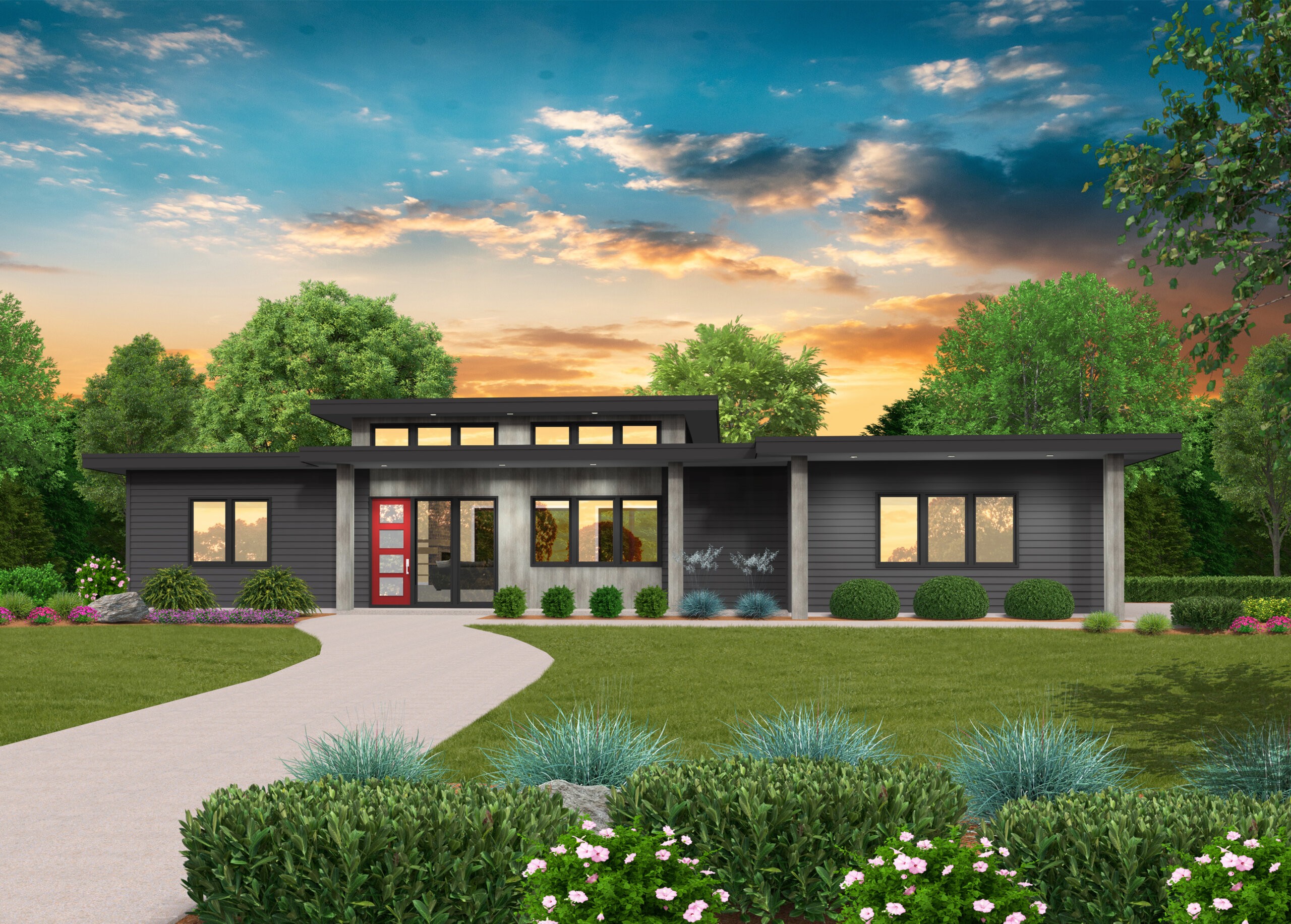Designing for Functionality and Comfort: 1 Story 2 Bedroom House Plans

Creating a comfortable and functional 1-story, 2-bedroom home plan requires thoughtful consideration of every element. From the kitchen layout to the bedroom configurations, each space should be designed to maximize functionality and promote a sense of well-being.
Kitchen Layout
The kitchen is the heart of the home, and its layout should be both efficient and inviting. A well-designed kitchen will encourage culinary creativity and make meal preparation a joy.
- Work Triangle: The classic kitchen work triangle, formed by the refrigerator, sink, and stovetop, should be thoughtfully positioned to facilitate smooth workflow. The ideal distance between each point of the triangle is between 4 and 6 feet, allowing for ample movement and preventing congestion.
- Island or Peninsula: An island or peninsula can serve as a focal point, providing additional counter space, seating, and storage. It can also be used to divide the kitchen from the dining area, creating a sense of separation without completely closing off the space.
- Storage Solutions: Maximizing storage is crucial in a compact kitchen. Consider incorporating pull-out drawers, deep cabinets, and vertical storage solutions to keep items organized and easily accessible.
Bathroom Design
A well-designed bathroom should be both functional and aesthetically pleasing. It should offer a sense of sanctuary and provide a comfortable space for personal hygiene.
- Layout and Size: The layout of a bathroom should be carefully planned to ensure efficient use of space. For a small bathroom, consider a single vanity with a compact toilet and shower. For larger bathrooms, a double vanity, separate shower and tub, and additional storage space can be incorporated.
- Storage Solutions: Maximize storage in a bathroom with a variety of options, such as a medicine cabinet, linen closet, wall-mounted shelves, and under-sink storage.
- Ventilation: Proper ventilation is essential for preventing moisture buildup and maintaining a healthy environment. A well-ventilated bathroom should have a window or an exhaust fan to remove steam and odors.
Bedroom Configurations
Bedrooms should be designed to provide a peaceful and relaxing sanctuary. Consider the following factors when planning bedroom configurations.
- Size and Layout: The size of each bedroom should be appropriate for its intended use. A master bedroom may require more space than a guest room. Consider the placement of furniture, such as a bed, dresser, and nightstands, to ensure comfortable movement and adequate space for storage.
- Natural Light and Ventilation: Bedrooms should have access to natural light and fresh air. Windows should be strategically placed to maximize natural light and ventilation.
- Storage Solutions: Maximize storage in bedrooms with built-in closets, under-bed storage, and wall-mounted shelves.
Natural Light and Ventilation
Maximizing natural light and ventilation is crucial in a compact home. These elements contribute to a brighter, more airy atmosphere and improve overall well-being.
- Window Placement: Strategically placed windows can flood the interior with natural light and provide cross-ventilation. Consider using large windows or skylights to maximize natural light.
- Lightwells: In homes with limited windows, lightwells can be incorporated to bring natural light into interior spaces. A lightwell is a vertical shaft that allows natural light to penetrate deeper into the house.
- Ventilation Systems: Proper ventilation is essential for removing stale air and moisture. Consider installing exhaust fans in bathrooms and kitchens to remove moisture and odors.
Smart Storage Solutions, 1 story 2 bedroom house plans
Smart storage solutions are essential for maximizing functionality in a limited space. By incorporating clever storage techniques, you can create a home that is both spacious and organized.
- Built-in Storage: Built-in shelves, cabinets, and drawers can provide efficient storage solutions that seamlessly integrate into the design of the home.
- Multi-Functional Furniture: Consider using multi-functional furniture, such as a sofa bed or a coffee table with built-in storage, to maximize space and minimize clutter.
- Vertical Storage: Vertical storage solutions, such as wall-mounted shelves, can help to maximize space by utilizing the vertical dimension of the room.
Space-Saving Techniques
Incorporating space-saving techniques can make a small home feel more spacious and comfortable.
- Open Floor Plan: An open floor plan can create a sense of spaciousness by eliminating walls and allowing light to flow freely throughout the home.
- Mirrored Surfaces: Mirrored surfaces can reflect light and create the illusion of more space. Consider using mirrors in hallways, bedrooms, and bathrooms to create a sense of expansiveness.
- Light Colors: Light colors can make a room feel larger and brighter. Use light colors on walls, ceilings, and furniture to create a spacious atmosphere.
